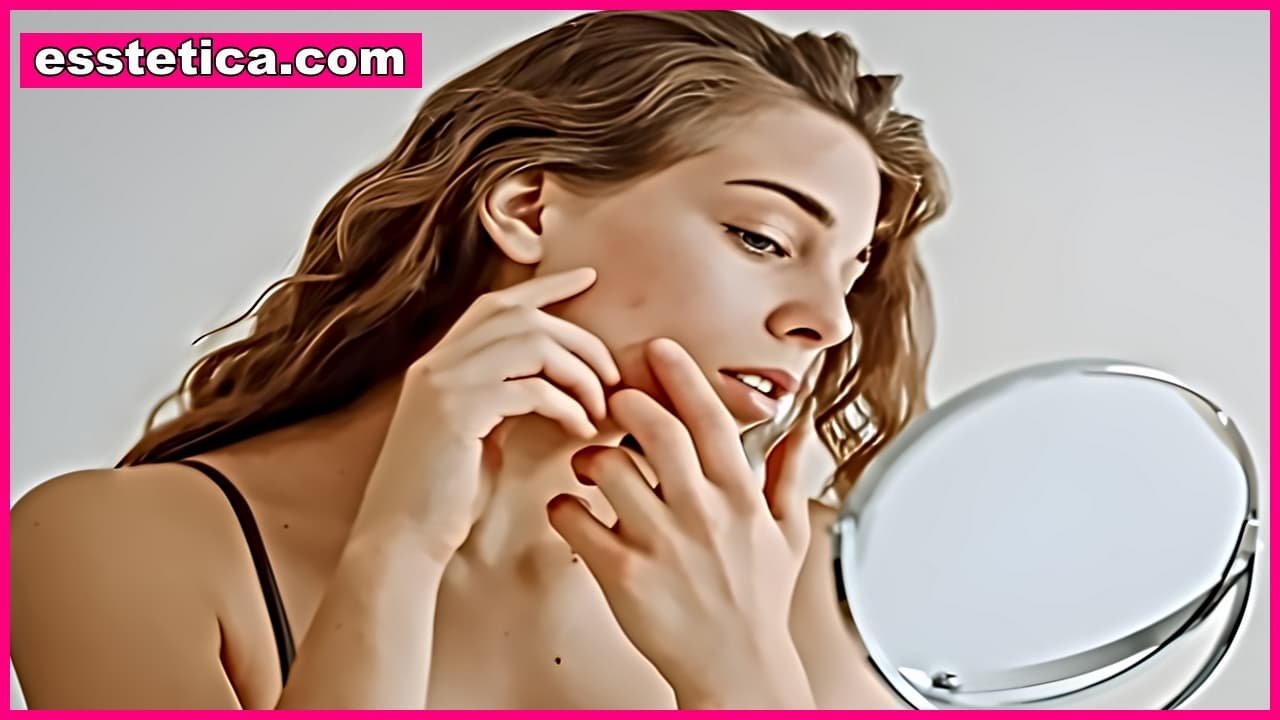Introduction
Let’s be honest — when that stubborn pimple pops up right before an event, your first instinct is to reach for your acne cream. But have you ever stopped and wondered how that little tube of magic actually works?
Most of us just dab it on, cross our fingers, and hope for a miracle overnight. Yet behind that simple act lies a complex mix of chemistry, skin biology, and science that quietly transforms what’s happening beneath your skin.
So today, let’s peel back the layers (literally!) and discover how acne creams actually work, why some formulas clear skin faster than others, and what your skin is really doing when that sting hits.
1. The Skin Battlefield: Where Acne Begins
Before we talk about how acne creams fight breakouts, we need to understand what they’re fighting against.
Acne forms deep inside your pores — tiny openings in your skin connected to oil glands (sebaceous glands). These glands produce sebum, a natural oil meant to keep your skin hydrated and protected.
But when too much sebum combines with dead skin cells, it clogs the pore. Add a dash of bacteria (Cutibacterium acnes), and you’ve got the perfect storm — inflammation, redness, and pus-filled bumps.
Acne creams step in here — right where that invisible battle between oil, bacteria, and skin cells happens.
2. The Multi-Action Magic: What Acne Creams Actually Do
A good acne cream isn’t just a single-purpose fix. It works on several fronts at once to break the acne cycle:
-
Unclog pores and dissolve excess oil
-
Kill acne-causing bacteria
-
Reduce inflammation and redness
-
Speed up cell turnover for healing
-
Prevent new breakouts from forming
Let’s break down how all this actually happens inside your skin.
3. Step One: Breaking the Blockages
The Problem:
Dead skin cells and sebum clump together, sealing your pore.
The Cream’s Response:
Enter exfoliating acids — ingredients like salicylic acid and glycolic acid.
-
Salicylic acid, a beta-hydroxy acid (BHA), dives deep into pores since it’s oil-soluble. It dissolves the gunk that causes blockages, helping your pores breathe again.
-
Glycolic acid or lactic acid, on the other hand, work on the surface — they remove dead skin cells and smooth texture.
Together, they act like tiny janitors sweeping away the debris that starts every breakout.
Result:
Your pores stay clean, your skin texture evens out, and those under-the-surface bumps start shrinking.
4. Step Two: Killing the Bacteria
The Problem:
Cutibacterium acnes (C. acnes) thrives in trapped, oily environments.
The Cream’s Response:
That’s where benzoyl peroxide or antibiotic-based creams come in.
-
Benzoyl peroxide is like the skin’s disinfectant superhero. It releases oxygen inside pores — and since C. acnes hates oxygen, it effectively destroys the bacteria without the risk of antibiotic resistance.
-
Clindamycin and erythromycin (found in prescription creams) directly inhibit bacterial growth, calming the infection.
Result:
The bacteria population drops, inflammation subsides, and swelling reduces.
Fun fact:
When you feel a little tingling after applying acne cream, that’s often the oxygenation process doing its job.

5. Step Three: Calming the Inflammation
The Problem:
Once the immune system jumps in to fight bacteria, the area becomes red, swollen, and painful.
The Cream’s Response:
Anti-inflammatory ingredients like niacinamide, sulfur, green tea extract, and zinc oxide calm the chaos.
-
Niacinamide (Vitamin B3) is a crowd favorite — it soothes irritation, reduces redness, and even helps strengthen your skin barrier.
-
Sulfur absorbs excess oil and gently dries out active blemishes.
-
Zinc helps regulate oil and minimize inflammation.
Result:
Redness fades, pain decreases, and your skin begins to repair itself faster.
6. Step Four: Speeding Up Cell Renewal
The Problem:
Even after inflammation fades, acne leaves behind clogged pores, scars, and dark marks.
The Cream’s Response:
Enter the retinoids — the powerhouse of skin renewal.
Derived from Vitamin A (like retinol or adapalene), these ingredients accelerate skin cell turnover, preventing new clogs and stimulating collagen.
They basically tell your skin: “Out with the old, in with the new.”
Result:
-
Fewer clogged pores
-
Smoother texture
-
Fading acne scars and pigmentation
Note: Retinoids can cause peeling or dryness at first — that’s just your skin adjusting to the new, faster cycle of regeneration.
7. Step Five: Preventing Future Breakouts
Here’s where many acne creams shine — they don’t just treat current pimples; they create a hostile environment for future ones.
By balancing oil production, maintaining clear pores, and keeping bacteria levels low, acne creams help your skin remain in a steady state of clarity.
Think of it as teaching your skin new habits — less oil, faster cell renewal, fewer bacterial colonies.
8. The Key Ingredients Behind Acne Creams
Let’s look closer at what you’re actually putting on your face.
| Ingredient | Primary Function | How It Works |
|---|---|---|
| Benzoyl Peroxide | Antibacterial | Releases oxygen to kill C. acnes |
| Salicylic Acid | Exfoliant | Clears pores and removes excess oil |
| Retinoids (Retinol, Adapalene) | Cell turnover | Speeds renewal and reduces clogs |
| Niacinamide | Anti-inflammatory | Calms irritation, strengthens barrier |
| Sulfur | Oil control | Absorbs excess sebum and dries pimples |
| Azelaic Acid | Brightening, antibacterial | Evens tone and reduces inflammation |
| Tea Tree Oil | Natural antibacterial | Kills bacteria and soothes skin |
Each formula blends some of these heroes to target different acne types — from blackheads to cystic breakouts.
9. How Fast Do Acne Creams Work?
Here’s the part nobody likes to hear: patience is part of the process.
Most acne creams take time — 4 to 8 weeks before visible improvement, sometimes longer for deeper acne.
Why? Because your skin’s renewal cycle is slow — roughly 28 days. Acne creams work with that natural rhythm, retraining your skin to function better over time.
During the first few weeks, you might even see purging — when hidden clogs come to the surface. It’s not a bad sign; it means your skin is clearing itself out.
10. Common Mistakes When Using Acne Creams
Even the best product can fail if it’s used wrong. Here are the biggest pitfalls:
-
Overuse – applying too much causes irritation, dryness, or peeling.
-
Mixing too many actives – using salicylic acid + benzoyl peroxide + retinoid = overkill.
-
Skipping moisturizer – dry skin triggers more oil production, worsening acne.
-
No sunscreen – many acne ingredients make your skin more sensitive to UV damage.
-
Inconsistent use – acne creams only work if used regularly; missing days breaks the cycle.
Consistency beats aggression — always.
✅ Struggling with acne? Discover the 2 natural solutions I personally recommend:
👉 Get Ninja Health Now — Launch Your Health Site in 60 Seconds
11. Different Acne Types, Different Cream Strategies
Not all acne is created equal, so not all creams work the same way.
For Whiteheads & Blackheads (Comedonal Acne):
-
Salicylic acid and retinoids are your best allies.
For Red, Inflamed Pimples (Papules & Pustules):
-
Benzoyl peroxide or niacinamide reduce swelling and bacteria.
For Deep, Painful Cysts or Nodules:
-
Prescription retinoids or combination creams with antibiotics may be needed.
Tailoring treatment to your acne type is key — otherwise, you might be fighting the wrong battle.
12. The Hidden Role of Moisturizers and Barrier Repair
Here’s something few people talk about: acne-prone skin still needs moisture.
Many acne creams dry the skin, which leads to flaking and barrier damage. A compromised barrier invites bacteria, irritation, and even more acne.
That’s why dermatologists recommend pairing acne creams with non-comedogenic moisturizers. Ingredients like ceramides, hyaluronic acid, and panthenol keep skin hydrated without clogging pores.
Healthy skin heals faster — and resists breakouts better.
13. Combining Science and Patience
Acne creams are like quiet workers — they don’t shout results, but they build them gradually, layer by layer.
They reset your skin’s behavior, retrain your pores, and guide your oil glands back into balance. The key is understanding the process, not rushing it.
With consistent use, gentle cleansing, and barrier support, you’ll start to see your skin shift from reactive to resilient.
14. The Future of Acne Creams: Smarter, Softer, More Targeted
Modern formulations are evolving fast. The future of acne treatment lies in precision skincare — products that:
-
Deliver actives through smart encapsulation (like slow-release retinoids)
-
Target bacterial imbalance without harming the skin microbiome
-
Combine science and botanicals for gentler, sustainable results
Soon, acne creams won’t just clear pimples — they’ll rebalance the skin ecosystem itself.
Conclusion: Small Tube, Big Science
The next time you apply your acne cream, remember — it’s not just a topical product. It’s a mini-laboratory working on your skin: unclogging pores, fighting bacteria, calming inflammation, and guiding your skin back to balance.
Every ingredient has a role. Every reaction is intentional.
So, when that pimple starts shrinking, that’s not luck — that’s biochemistry in action.
Your acne cream isn’t just healing the surface — it’s teaching your skin how to be healthy again.
✅ Struggling with acne? Discover the 2 natural solutions I personally recommend:
👉 Get Ninja Health Now — Launch Your Health Site in 60 Seconds
YOU MAY ALSO LIKE:


 What Acne Means: Understanding the Real Story Behind Your Breakouts
What Acne Means: Understanding the Real Story Behind Your Breakouts What Acne Means on Your Face: The Hidden Map of Your Skin
What Acne Means on Your Face: The Hidden Map of Your Skin


